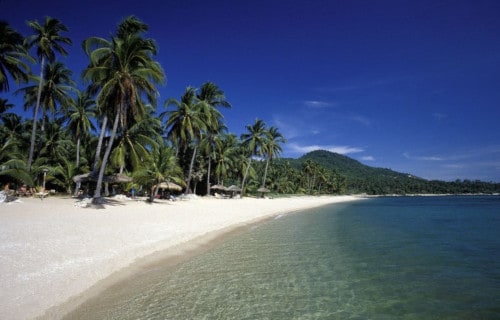
CCL: http://bit.ly/2xLZ0ap
Herein, we have for you our list of 6 Incredible Asian Islands. We sincerely hope that you enjoy reading it as much as we did writing it. An estimated 100,000+ islands dot the earth. The 155 largest have a combined total land area roughly equal to that of Europe. Yet they come in all varieties and types and occur in every part of the world. Indeed, these few represent only a tiny portion of those found in this one section of the world. Enjoy!
Bali
Bali Facts
- The first location on our compendium of 6 Incredible Asian islands is the breathtaking Bali. This isle has long been known for its beauty.
- Bali names both an island and province of Indonesia, Asia, and also includes a few smaller neighboring islands, notably Nusa Penida.
- The island sits at the westernmost end of the Lesser Sunda Islands. Further, it lies between Java to the west and Lombok to the east.
- It also forms part of the Coral Triangle, the area with the highest biodiversity of marine species. For example, in this area alone over 500 reef-building coral species exist.
- By comparison, this equals about 7 times as many as in the entire Caribbean.
- There also exists a wide range of dive sites with high-quality reefs. All of these boast their own specific attractions. Many sites often have strong currents and swells so scuba diving without a knowledgeable guide remains inadvisable.
Bali Geographical Location and Description
The island of Bali sits about 8 degrees south of the equator. It and Java remain separated by the Bali Strait, roughly 95 mi (153 km) in length and 69 mi (112 km) in width.
Its central mountains include several peaks over 9,842 ft (3,000 m) in height. The highest is Mount Agung, known as the mother mountain, an active volcano.
The volcanic nature of the geology of Bali also contributed to its exceptional fertility. Additionally, its tall mountain ranges provide the high rainfall that supports the highly productive agriculture sector.
Bali Landscape
The northern side of the mountains slopes more steeply to the sea and holds the main coffee producing area of the island, along with rice, vegetables, and cattle. The island also continues to be surrounded by coral reefs.
Beaches in the south tend to have white sand while those in the north and west have sand colored black. The island has no major waterways, although the Ho River is navigable by small sampan boats.
Black sand beaches between Pasut and Klatingdukuh are under development for tourism, but apart from the seaside temple of Tanah Lot, they are not yet in use for significant tourism.
Socotra
Socotra Facts
- The next entry on our list of 6 Incredible Asian Islands is the astonishing Socotra. It easily ranks as one of the most remarkable places on earth, to many.
- First of all, the astonishing location remains one of the most truly astounding sites found anywhere in the entire world.
- Also, geographically, this amazing island, which is the largest of four in the archipelago bearing the same name, is extremely isolated.
- Furthermore, it has often been referred to by many people, both verbally and in print, as the most alien-looking place on earth.
- This occurs due to the fact that many of the plants and animals endemic to Socotra seem unlike anything else in the world.
- Finally, thanks to its utterly unique nature, UNESCO recognized the island as a World Heritage Site in 2008.
Socotra Physical Description
The breathtaking main island of Socotra constitutes the great majority of the land area within the entire archipelago.
Measuring roughly 82 mi (132 km) in length, and also about 31 mi (50 km) in width, it contains roughly 95% of the total area of the four islands combined.
In addition, Socotra also boasts an impressive total of three distinctly different geographical terrains within its boundaries.
These include a narrow section of plains along the coast, a reasonably impressive mountain range, and, finally, a large limestone plateau.
Socotra Location, Flora, and Fauna
The incredible Socotra once formed part of the supercontinent of Gondwana, until it broke off during the Miocene Epoch.
Further, today, it sits between the Guardafui Channel and the Arabia Sea and constitutes part of the country of Yemen, located in Asia.
Socotra also remains best known for the highly distinctive, and quite often unique, species of endemic animals and plants that call the island home.
For the moment, the number of species found on this island and nowhere else on earth total nearly 700.
Furthermore, perhaps the best known of these is the remarkable Dragon’s Blood Tree, with its strange umbrella shape.
Koh Samui

CCL: http://bit.ly/2xLZ0ap
Koh Samui Facts
- The third site on our list of 6 Incredible Asian Islands is the fabulous Koh Samui. This tropical paradise is fast becoming a frequent vacation spot.
- This stunning spot is an island located off the east coast of Thailand, in Asia. It represents the second largest island in the country.
- It also forms part of the Chumphon Archipelago and has a current population of about 63,000 individuals.
- Humans first inhabited the island about 1,500 years ago. Even though it constitutes a popular tourist location in the region, the majority of the place remains isolated.
- Koh Samui did not even possess a road system until the 1970s.
- The place remains a marvel of botanical and geological beauty. Though it continues to export coconuts and rubber, tourism recently replaced those as the leading economy.
Koh Samui Geology and Geography
The island possesses a total area of roughly 89 sq mi (229 sq km). More than sixty other, much smaller islands surround it. Together they comprise the Angthong Marine National Park.
The outer regions of the island are dotted with beautiful beaches, coral reefs, and large areas of coconut trees.
The central part of Koh Samui forms a virtually uninhabitable area of a dense tropical jungle where a mountain named Khao Pom dominates. It rises to a height of about 2,083 ft (635 m).
Several natural ports also currently exist along the shoreline.
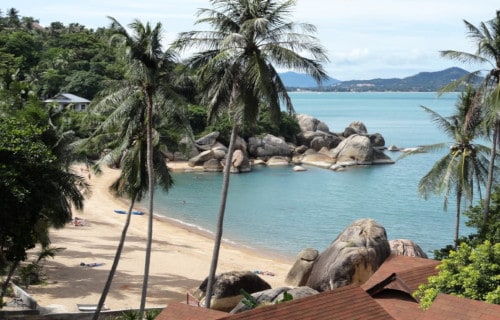
CCL: http://bit.ly/2xQPH8p
Koh Samui Climate
The island of Koh Samui possesses a true tropical monsoon climate. In fact, the only relatively dry month remains February.
The island also receives nearly 77 inches (196 cm) of rainfall each year. For that reason, the climate stays warm and humid for the majority of the year.
The heaviest rainfall occurs during the months of October and November. Rain showers are typically brief, except during the seasonal monsoons.
Further, the prodigious quantity of water that the dense jungle region retains, serves to maintain the high humidity levels throughout the year.
Palawan Island
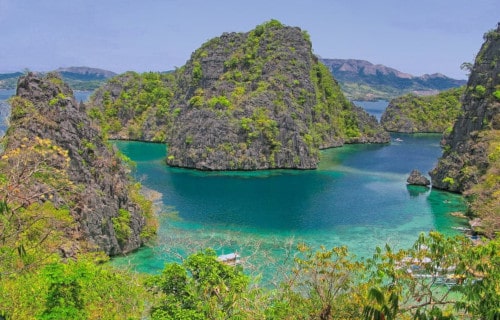
CCL: http://bit.ly/2xQPH8p
Palawan Island Facts
- Our next entry on this list of 6 Incredible Asian Islands is the unbelievably picturesque Palawan Island.
- This is the largest island in the Palawan Province, in the Philippines. The majority of the site also remains in its pristine natural condition and most of the development is due to tourism.
- This rather breathtaking island ranks as one of the most beautiful on earth. The southern coast borders the Sulu Sea while the northern coast – the South China Sea.
- Much of the island remains covered in dense jungle and teems with wildlife. The entirety of it is officially a Biosphere Reserve as well as a UNESCO World Heritage Site.
Palawan Island Geology, Geography, and Ecology
This magical place has a total area of about 4,706 sq mi (12,189 sq km). The highest elevation on the jungle-covered island is 6,841 ft (2.085 m).
The northern portion of this geological gem is famous for its crystal-clear waters, white sand beaches, and limestone cliffs.
This island is also teeming with numerous species of flora and fauna. A total of five known endangered species of sea turtle calls the island their home.
In addition to all this, the gorgeous waters surrounding Palawan Island are also full of numerous coral reefs.
There are even extensive cave systems and an underground river on the island.
Palawan Island Climate and Weather
Interestingly, due to unique meteorological factors, Palawan Island actually possesses two distinct climates.
The northern, southern, and western portions of the island display only two seasons which comprise two approximately equal length seasons of wet and dry.
Further, the eastern coastal regions of the island possess a dry to semi-dry climate year-round.
The daytime highs and nighttime low temperatures on Palawan Island remain roughly constant throughout the year. In fact, the average high-temperature year round is 86F (30C).
The surrounding seas are also generally rather calm much of the year.
Jeju Island
Jeju Island Facts
- The fifth entry on our list of 6 Incredible Asian Islands is the mesmerizing Jeju Island. What an astounding place.
- This island is a rather stunning volcanic island, dominated by Hallasan, a volcano 1,950 m (6,400 ft) high and the highest mountain in South Korea.
- The island also measures roughly 45 mi (73 km) across, east to west, and 25 mi (40 km) from the north to the south.
- There is also a magnificent crater lake, which is the only crater lake in this country in Asia and is indeed a marvel of geology.
- Jeju Island formed entirely from volcanic eruptions approximately 2 million years ago, during the time period extending from the Tertiary Period to the beginning of the Quaternary Period.
- It consists chiefly of basalt and lava. The eruptions took place in the Cenozoic era.
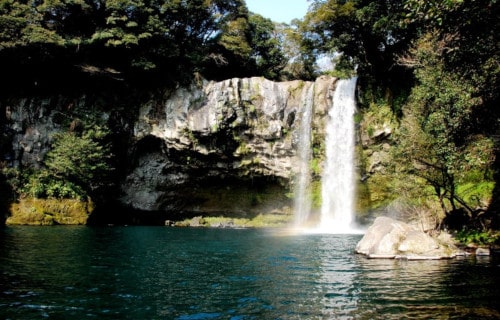
CCL: http://bit.ly/2zDnGC2
Jeju Island Physical Description
An area covering about 86 sq mi (224 sq km) of Jeju Island is also famous as the Gotjawal Forest with several beautiful waterfalls.
Because this forest remained pristine for so long, it has a unique ecology. In fact, the forest remains the main source of fresh groundwater making it the main water source for the roughly half million people on the island.
Rainwater penetrates directly into the aquifer through the cracks of the lava beneath the forest.
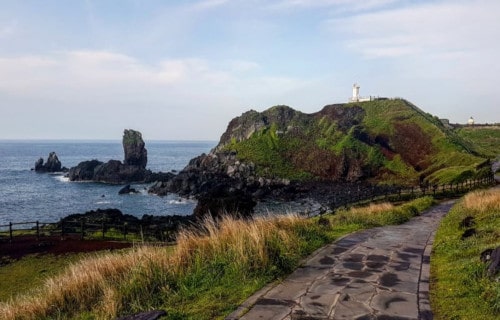
CC: http://bit.ly/2zBWbKi
Jeju Island Climate
Gorgeous Jeju Island has a rather humid, subtropical climate warmer than that of the rest of Korea. It also boasts four distinct weather seasons.
In addition, the winters usually remain rather cool and also quite dry while summers are hot, humid, and sometimes rainy.
The majority of the island remained uncultivated until the 21st century, as its base of A-Type lava made it difficult to develop for agriculture.
The Gotjawal forest is also an internationally important wetland area under the Ramsar Convention. It is the habitat of unique species of plants and is the main source of water for the residents. However, to date, it is yet to become a Ramsar site.
Boracay
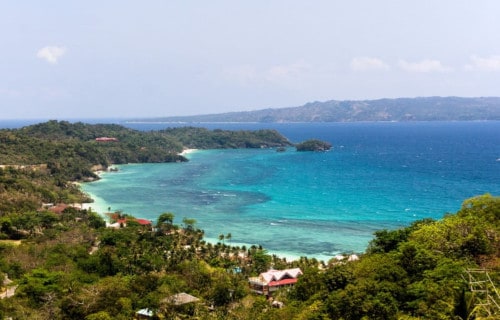
CCL: http://bit.ly/2QZT99x
Boracay Facts
- And the final, but certainly not least, location on our list of 6 Incredible Asian islands is the awesome Boracay.
- This is a small island that constitutes part of the Philippines in Asia. The geological and botanical marvel is located roughly 196 mi (315 km) south of Manila.
- The great natural beauty of Boracay also makes it one of the leading such destinations in the world for tourists.
- Yet when Europeans first discovered the site, it already boasted habitation by a population of approximately one hundred Indigenous Peoples, comprising the Ati tribe.
- Finally, tourism did not come to the island until the late 1970s.
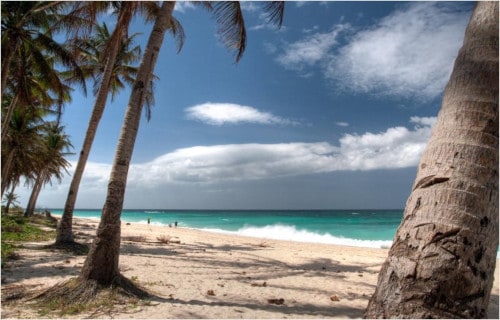
CCL: http://bit.ly/2QZT99x
Boracay Physical Description
The small island of Boracay comprises a rather small total area of about 4 sq mi (10.4 sq km). The island also roughly forms a rounded rectangular shape and with a markedly narrower middle.
The length of the island measures roughly 4.4 mi (7 km). The narrowest section measures less than 0.6 mi (1 km) across.
In addition to its incredibly lush vegetation, Boracay also earned fame for the beauty of its numerous beaches.
But, the largest two beaches sit on opposite sides of the narrow section. The almost constant windy conditions serve to make the island an excellent location for kiteboarding and windsurfing enthusiasts.
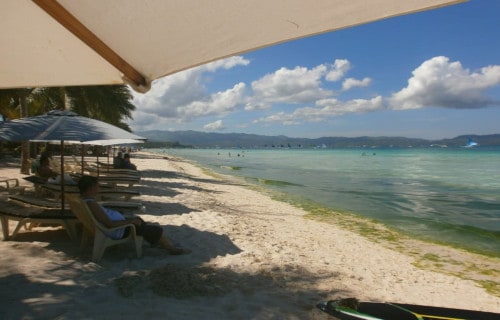
CCL: http://bit.ly/2zBWbKi
Boracay Climate and Weather
The climate of Boracay remains decidedly tropical in nature. Yet the weather is also divided into two rather unique patterns, known as the Amihan and Habagat seasons.
These names derive from the Visayan language and literally mean cool northeast wind and southwest winds respectively.
The Amihan season almost exclusively consists of rather moderate temperatures, little or no rain, and the northeasterly wind.
The Habagat season on Boracay consists primarily of hot and humid weather, frequent heavy rains, and the almost constant westerly wind.
Typically, the transition from one pattern to the other is dramatically swift and, as a result, can literally occur overnight.
Year-round daytime high temperatures range between 68-90 F (20-32 C).
6 Incredible Asian Islands

CCL: http://bit.ly/2xQPH8p
We sincerely hope that you have enjoyed this article on 6 Incredible Asian Islands. These incredible locations seem like paradise to many. Their beauty never fails to please the senses. Yet they, like so many places in the world, need our protection. It is up to all of us to do everything we can to preserve their natural beauty for those who follow after us.
Check out our other articles on 7 Magnificent Wild Canines, North American Gulches, and Canyons, Wonderful Wild Cats of the World, Earth’s Extremely Threatened Flowers
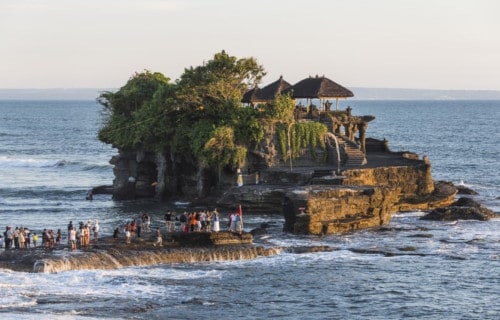
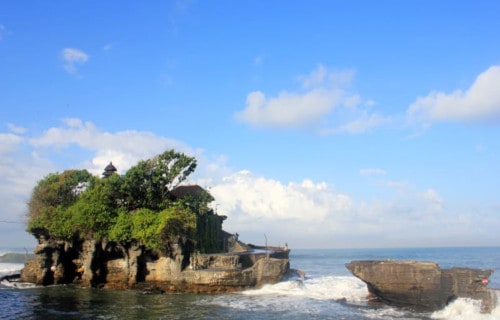
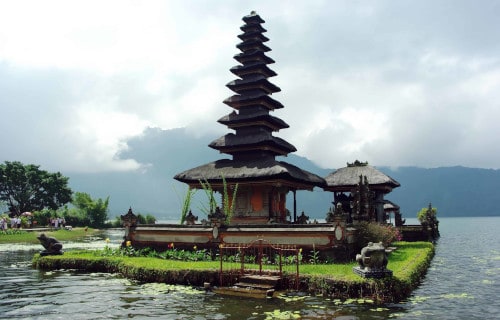
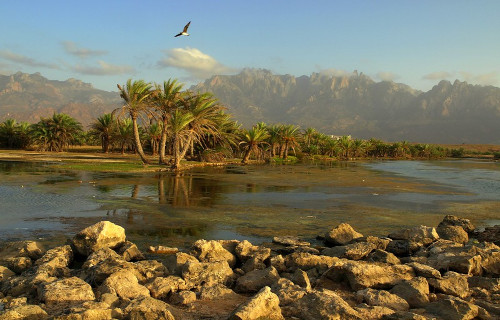
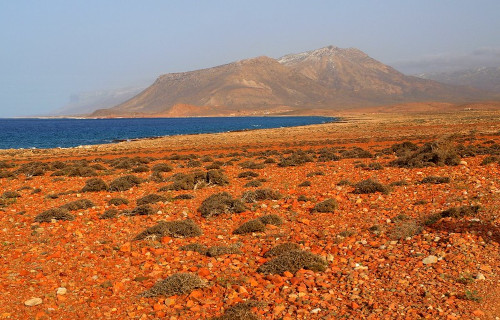
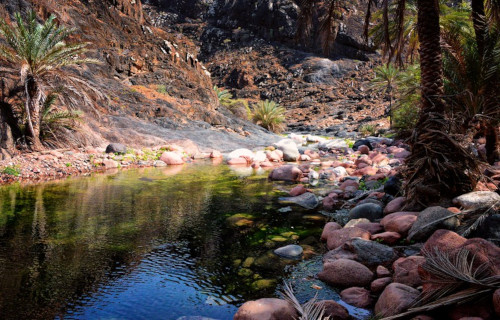
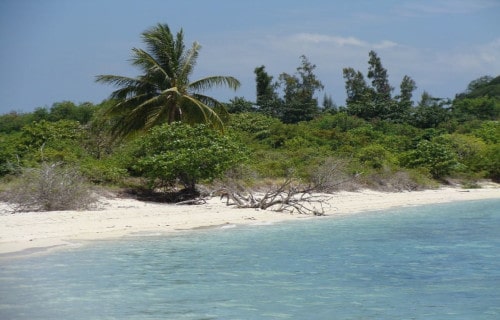
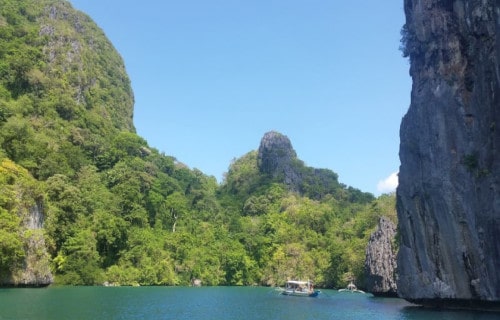
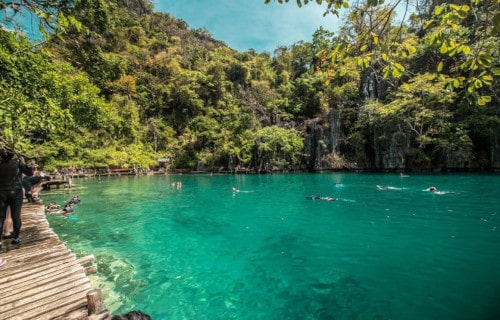
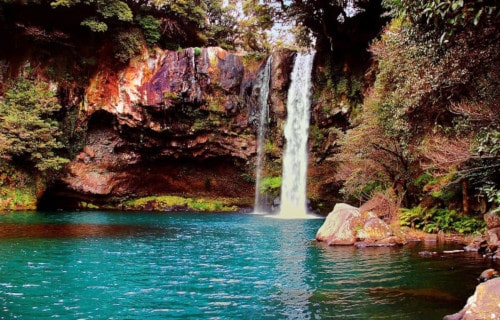









Leave a Reply